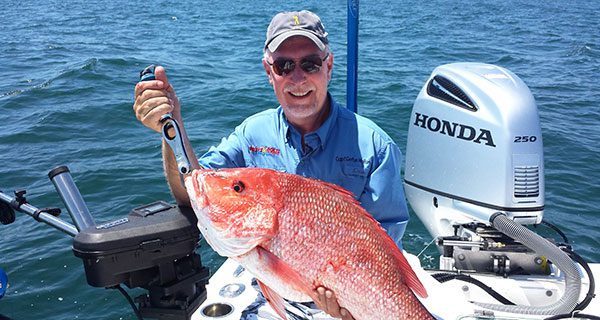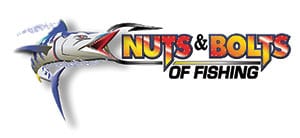
Summer has arrived! Outside temperatures are hitting the 90 degree mark by mid-morning. Bottom fishing and downlining baits on a breezeless ocean or lake has your favorite fishing shirt drenched with sweat while you wait for a bite. Isn’t fishing supposed to be fun? Here’s a tactic to help keep you cool, and probably put a few more fish in the box. Set up your boat for trolling. You’ll actually be covering more water, and you’ll be creating a little bit of a breeze to keep you a lot cooler.
In the heat of the summer, many game fish move to deeper, cooler water where they can find higher oxygen concentrations. You need to get your baits and lures into the strike zone, so trolling becomes an excellent option. Dragging baits allows you to explore a lot of water in a shorter time, and it is one of the most effective ways to present a variety of baits (artificial or natural) at different depths.
The way you set up your spread can be as simple as rigging a couple of deep diving plugs…dropping them about 50 to 100 feet behind the boat, then set the boat speed somewhere between two and five miles per hour. Your ideal trolling speed will be dictated by the type of bait or rig and the depth you want to achieve. For wahoo you may be trolling cedar plugs and jet-heads from seven to as much as fifteen miles per hour. For stripers and bass you may be running at just over two miles per hour. And on a perfectly still day, even two miles an hour will put a little bit of a breeze on your face. On days when the sea state is just a little too sloppy to comfortably stand at the rail and bottom fish, trolling reduces the pitching and rolling of a boat that can make some folks turn green.
Trolling also gives you the opportunity to cover a wider swath of water. With horizontal rod holders, you can expand the footprint of your boat by as much as fifteen feet using 7 ½ foot rods to extend out on either side of the boat. And you can cover virtually the entire vertical water column by using diving plugs that run at specific depths. But even the largest diving plugs have their limits. That’s why you might want to consider adding downriggers to your boat as well.
You can add a manual downrigger that can be clamped to the transom of a jon boat for under $100. Or step up to an electric downrigger for around $500. I use my Scotty Downriggers in both fresh and saltwater situations where I need baits to be 10 feet down or deeper. They are easy to mount on the boat, using either a bolt-on base, or a gimbal base that drops into a gunwale rod holder. And once a fish strikes the bait, you’re free to fight the fish unfettered, because the line snaps out of the adjustable-tension Scotty release clip. Push the retrieve button and the downrigger automatically raises the ball weight to just beneath the surface of the water. It’s simple, and downriggers will definitely help put more fish in the boat.
Umbrella rigs will also put a lot of fish in the boat. These three and four-armed contraptions are loaded with up to nine bucktail jigs and will run at different depths depending on the weight of the jigs and the speed you troll them. I often add an umbrella rig to my downrigger spread. Be ready for multiple hook-up’s with these rigs.
So just because it’s hot outside, don’t give up on some great summertime fishing. Set up your boat for trolling and enjoy a refreshing breeze while you’re catching more fish.
Tight lines and calm seas, Capt. Cefus McRae
